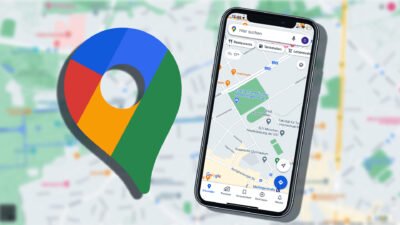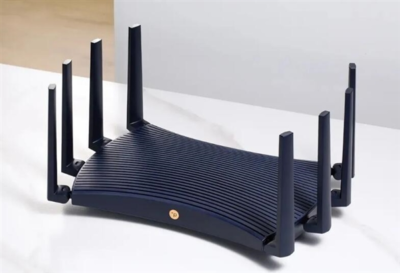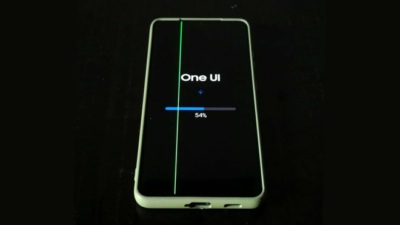Hardware That Makes App Development Possible

The first app arguably appeared all the way back in 1997. Nokia 3310 phones came preloaded with the highly addictive ‘Snake’ game. Applications have certainly come a long way since then. Mobile apps are especially prevalent today and are hugely diverse in function and form. The design and development of apps is big business, with developers coming from all walks of life. App development operations range from bedroom based indie developers to huge corporate teams with massive financial backing.
App development is highly dependent upon software. Most developers spend a great deal of their time hopping between software platforms designing aesthetic features, coding user input functionality and developing sound and video. Software, however, is only part of the story. Hardware and physical componentry is more essential than you might think in the development of applications for mobile and desktop alike.
Hardware related to app development can, roughly speaking, be broken down into three categories:
Hardware that aids the creative process
Microphones, drawing tools and cameras allow for the creation of attractive user facing elements that ultimately determine the success of many applications.
Computing and memory hardware
Relatively powerful computer hardware is needed to successfully develop an app. A computer needs to be able to run mobile emulators and app development tools without risking a shutdown. Additional RAM devices, such as those sold by Octopart, are also very valuable to developers working on a budget.
Hardware on the host system that enables development
GPS receivers, movement sensors and cameras on mobile devices can create opportunities for app developers to squeeze the most out of host hardware capabilities.
Here is a closer look at some of the hardware in each of these categories:
Hardware That Aids The Creative Process
Sound Production Tools
Sound design is very important in app development. A well designed palette of sounds baked into an app can make it far more entertaining and even solidify its brand. Take, for example, the message notification sounds used by apps like Tinder, WhatsApp, and Messenger. These sounds have become part of the auditory atmosphere of the modern age.
Sound production tools come in myriad forms. At the very least, a developer wanting to compose their own sound design should invest in a midi controller, microphone and speakers. App designers with a budget to burn will often hire in a professional musician and producer: commissioning them to produce sounds to a brief. The best sound designers work to create sounds that accurately reflect and project the intentions of the developers. It can be as simple as making something sound pleasant, but it is often a far more complex brief involving the wielding of emotionally suggestive noises. Professional sound designers often approach their work starting from the concept first. Using musical ideas to pursue marketing and aesthetic concepts is no easy task.
Drawing And Design Tools
Graphic design and illustration are key to the creation of any good app. Hardware can really help with these tasks. Drawing tools such as tablets are essential bits of kit for any app developer. Tablets are notoriously hard to get used to, but once a person gets the hang of one freehand drawing on a computer often becomes second nature. Some of the most popular drawing and design hardware is made by Wacom, who is well known for making very responsive drawing tablets.
Computing And Memory Hardware
RAM
App developers need to have access to a reasonably large amount of data storage in order to efficiently create an app without needing to delete as they go. A great deal of data is used when creating a media-heavy application. Enough memory needs to be available for the use of image editing, coding, emulation and animation programs simultaneously. Random Access Memory is a term used to describe the hardware that forms the internal memory bank of a computer. RAM is not used to store data permanently. Instead, it deals with the data storage needed to run programs and operating systems, whilst a hard drive is used for permanent memory.
Display
The archetypal developer’s office is dominated by multi-screen displays. Display and monitoring hardware is essential for comfortable and efficient development. Many app developers reserve one screen for coding, whilst another screen runs a mobile operating system emulator used for testing app features. Two monitors should be enough. Running too many monitors can make navigating your operating system feel like a bit too much of a challenge. A good visual display should also be paired with good audio monitoring. A pair of studio headphones or active monitor speakers are essential for any office where app development work takes place.
Host System Hardware That Enables Development
GPS Receivers
The Global Positioning System is a satellite-based method of determining location initially developed for the United States military in 1973. A similar system, GLONASS, was developed by the Soviets. Global positioning works using a system of 31 satellites. These satellites transmit radio signals to receivers, which in turn calculate the time it takes for the radio signal to reach them from the satellite. This allows the location to be determined, as the satellite location can be measured against the time and location of the receiver. It sounds complicated, and certainly was a complex system to develop that took millions of dollars to (literally) launch.
GPS receivers are integrated into the design of almost all modern smartphones. App developers have been able to utilize location in their designs in a really interesting variety of ways. One of the most successful GPS location utilizing apps is Pokémon GO. The gaming app uses GPS to track the movement of users and tailor their experience to their location. In order to find new Pokémon to add to their collection, a user needs to physically locate a corresponding coordinate in the real world. It encourages users to move to places that they have not explored before by making some in-game achievements accessible in certain spots. This was a revolutionary use of the GPS receiver in the pursuit of fun, as opposed to the simple pursuit of orientation. The application has proven to be a cultural phenomenon and has spawned a legion of gaming applications that also use the GPS receiver of the host device as a feature.
Cameras
In recent years, app developers have often sought to incorporate host device cameras into their creations. Almost all new mobile devices contain at least one camera. App developers have come up with all sorts of fascinating ways to design with a user’s camera in mind. QR code scanners, photo filters and augmented reality gaming all use the camera of a smartphone or tablet. Android has released a handy coding guide to help indie developers incorporate camera use into their app.
Motion Sensors
A mobile phone usually contains a kinetic motion sensor, otherwise known as an accelerometer. This sensor can detect a change in movement. App developers have made great use of this bit of hardware. Exercise tracking apps typically use a phone’s accelerometer as a pedometer – measuring the number of times the phone changes orientation in order to estimate the number of steps a person has taken. Fitness trackers are not the only apps developed with the accelerometer in mind. Virtual and Augmented reality applications use this sensor to match the orientation of the phone with the image shown on the screen. It is the accelerometer (along with the gyro) that allows a virtual reality video shown through Google Cardboard to follow the movements of the user’s head.
Digital marketing enthusiast and industry professional in Digital technologies, Technology News, Mobile phones, software, gadgets with vast experience in the tech industry, I have a keen interest in technology, News breaking.












